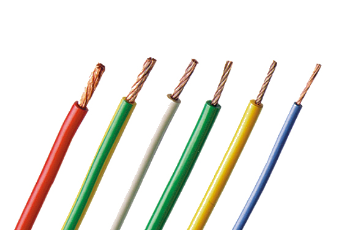Do you know the push button function? This article will introduce the push button function from definition and working principle.
A push button is a mechanical switch that, when pressed, opens or closes an electrical connection. Because it requires pressing a button to operate, it is called a “button.” Push buttons are one of the simple but important components commonly found in various electronic devices and machinery, which start or interrupt an electrical circuit through manual operation.

The basic working principle of a push button is to open or close a circuit by pressing the button. When the button is pressed, the internal switch mechanism closes the circuit, allowing current to flow; releasing the button opens the circuit, stopping the flow of current. This basic opening and closing principle makes buttons an important tool for controlling electronic devices and systems.

The function of the push-button switch
1. Control circuit opening and closing
The most basic function of the push button is to control the opening and closing state of the circuit. When the button is pressed, it closes the circuit through an internal switching mechanism, allowing current to flow; releasing the button opens the circuit, stopping the flow of current. This opening and closing operation can realize the start and stop, function switching and other operations of various electronic devices and systems.
2. Trigger temporary actions
Many push buttons are momentary, also known as Normally Open buttons. These buttons, when pressed, trigger one-time temporary actions, such as starting a motor, sending a signal, triggering an alarm, etc. Momentary buttons are usually used in scenarios where a function or action needs to be triggered temporarily.
3. Maintain state control
Another type of button is a retaining button, also known as a Normally Closed button. These buttons remain closed when pressed until released by pressing again. Retentive buttons are often used in scenarios that require continuous control of a certain state, such as continuous power on, locking functions, etc.
4. Control device and system operations
Buttons can be used as controls to operate various functions of a device or system. For example, in industrial control, buttons can be used to start and stop machines, switch modes, adjust parameters, etc.; in consumer electronics, buttons can be used to control functions such as volume, channels, and power.
5. Emergency stop and safety features
Push buttons are often used for emergency stops and safety functions. For example, emergency stop buttons (emergency stop buttons) are designed to be large and conspicuous and are used to immediately cut off the circuit in an emergency to stop equipment operation and ensure the safety of personnel and equipment.
6. User interface interaction
In many electronic devices, buttons are part of the user interface and are used to provide a means of interaction and operation. For example, the buttons on a TV remote control are used to select channels, adjust the volume, etc.; the buttons on a computer keyboard are used to enter characters and control functions, etc.
Generally speaking, buttons, as a simple and practical electronic component, realize various functions and operations by controlling the opening and closing state of the circuit. They are widely used in consumer electronics, industrial control, automobiles, medical equipment and other fields, and are very important to modern life. and industrial production plays an indispensable role.






